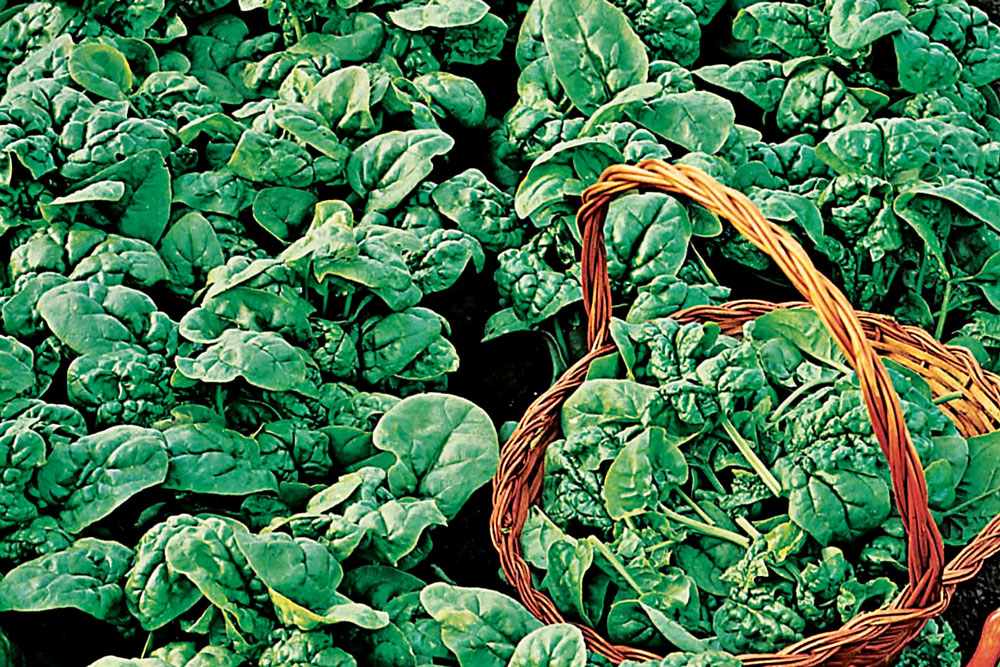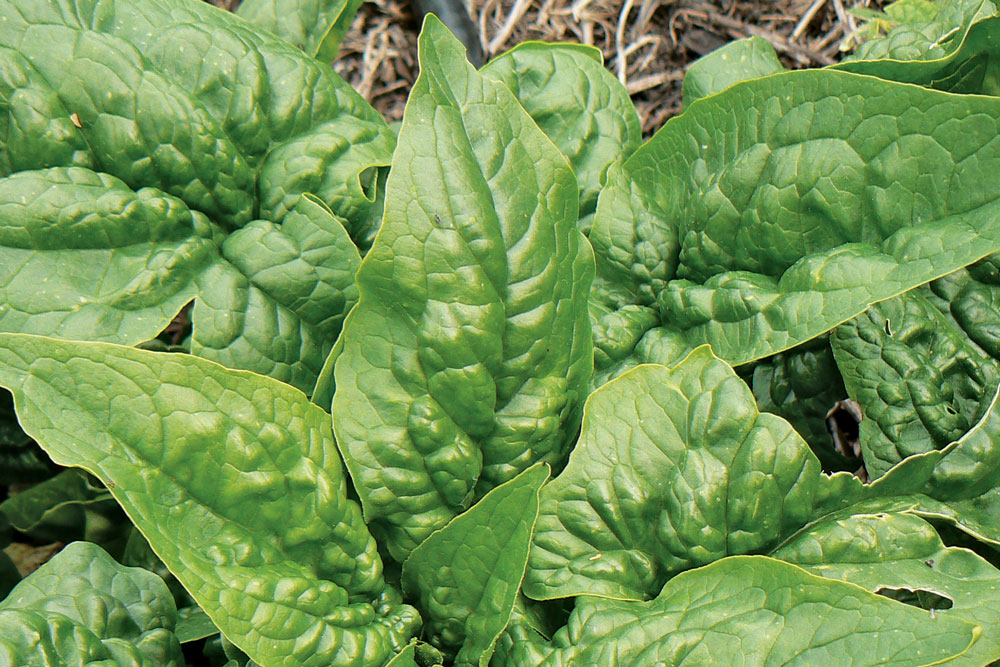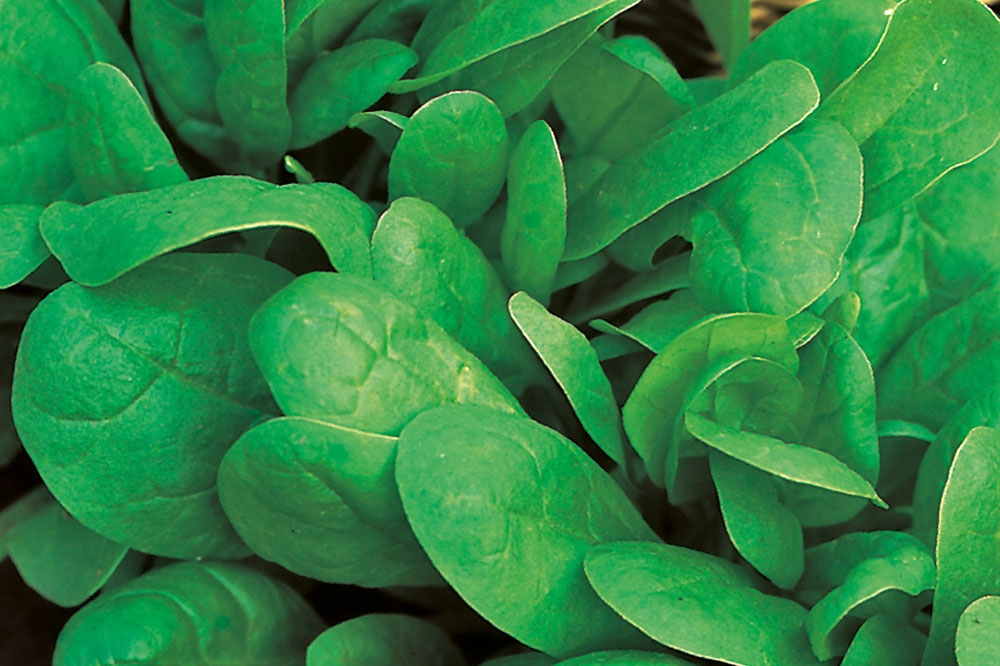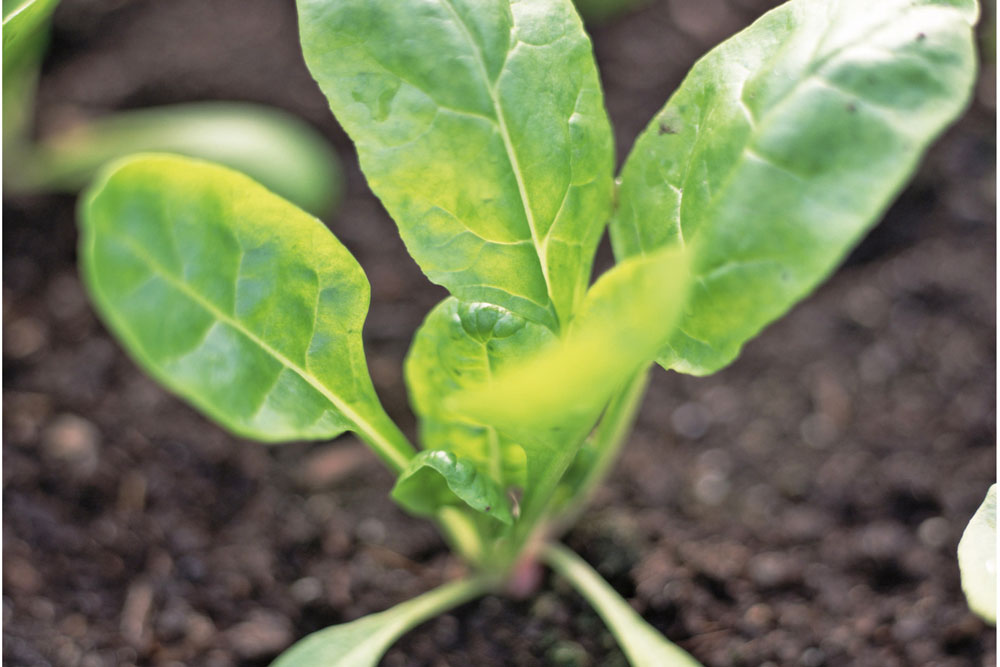
Famous for giving Popeye his bulging muscles, most of the iron in spinach is not easily absorbed by the body but this leafy annual is still a nutritional powerhouse.
It’s an excellent source of vitamins A and C, and antioxidants. It’s also rich in B group vitamins like folate, plus protein and magnesium.
Like many vegetables, spinach loses some of its nutritional value in cooking, so just wilt the leaves when boiling or steaming.
Spinach grows best in a cool climate as in warm areas it is likely to bolt to seed. Grow in full to part sun in soil that is rich in nitrogen.
Turn the soil over before planting so the taproot has a clear path for strong growth, and add well rotted compost. Good drainage is essential so the roots don’t rot.
Spinach is a hungry and thirsty plant, which explains its juicy, deep green leaves. Water regularly and apply a liquid fertiliser every two weeks to encourage fast growth. If the plant is slow to grow it can taste bitter.
If you have more spinach than you can eat, trim the stalks, wash and drain the leaves then blanch them for two minutes in small batches.
When it is cool enough to handle, squeeze out any excess moisture, pack into containers and freeze for use in soups and stews.
TIP Cultivate spinach alongside strawberries, broad beans and cauliflower for healthier plants.
Choosing a variety
Viking
- Tasty dark green leaves
- Grows best in a shady spot
- Slow to bolt to seed

Viking spinach has dark green leaves and grows best in shady spots
Bloomsdale
- Heirloom variety
- Large, crinkled, rich green leaves
- Compact growing plant

Bloomsdale spinach is an heirloom variety and is a compact growing plant
Medania
- Thick, rounded, dark green leaves
- Sweet and earthy flavour
- Reliable cropper

Medania spinach has a sweet and earthy flavour and is a reliable cropper
Growing Tips
A fast-cropping winter green, spinach is ready to harvest about 10 to 12 weeks after sowing.
SOW SEEDS into beds 100mm apart for picking leaves regularly or 200mm apart to harvest mature plants. Keep the soil moist but not wet and don’t let plants dry out or they’ll bolt to seed. Sow seeds every six weeks for a constant supply, soaking them in cold water overnight to speed up germination.
HARVEST the outside leaves with a sharp knife when the plant has at least six leaves, each about 100mm long. If the plant looks like it is about to bolt, cut it at the base just below the soil surface and remove it.
WATCH FOR downy mildew during prolonged periods of damp. Remove the worst affected leaves and spray with a mixture of 100ml full cream milk, 900ml water and a pinch of bicarb soda.
Cucumber mosaic virus can be spread by aphids. Remove and burn stunted leaves with yellow mottling and spray aphids with white oil.
Pick off caterpillars by hand and destroy or sprinkle with derris dust.


